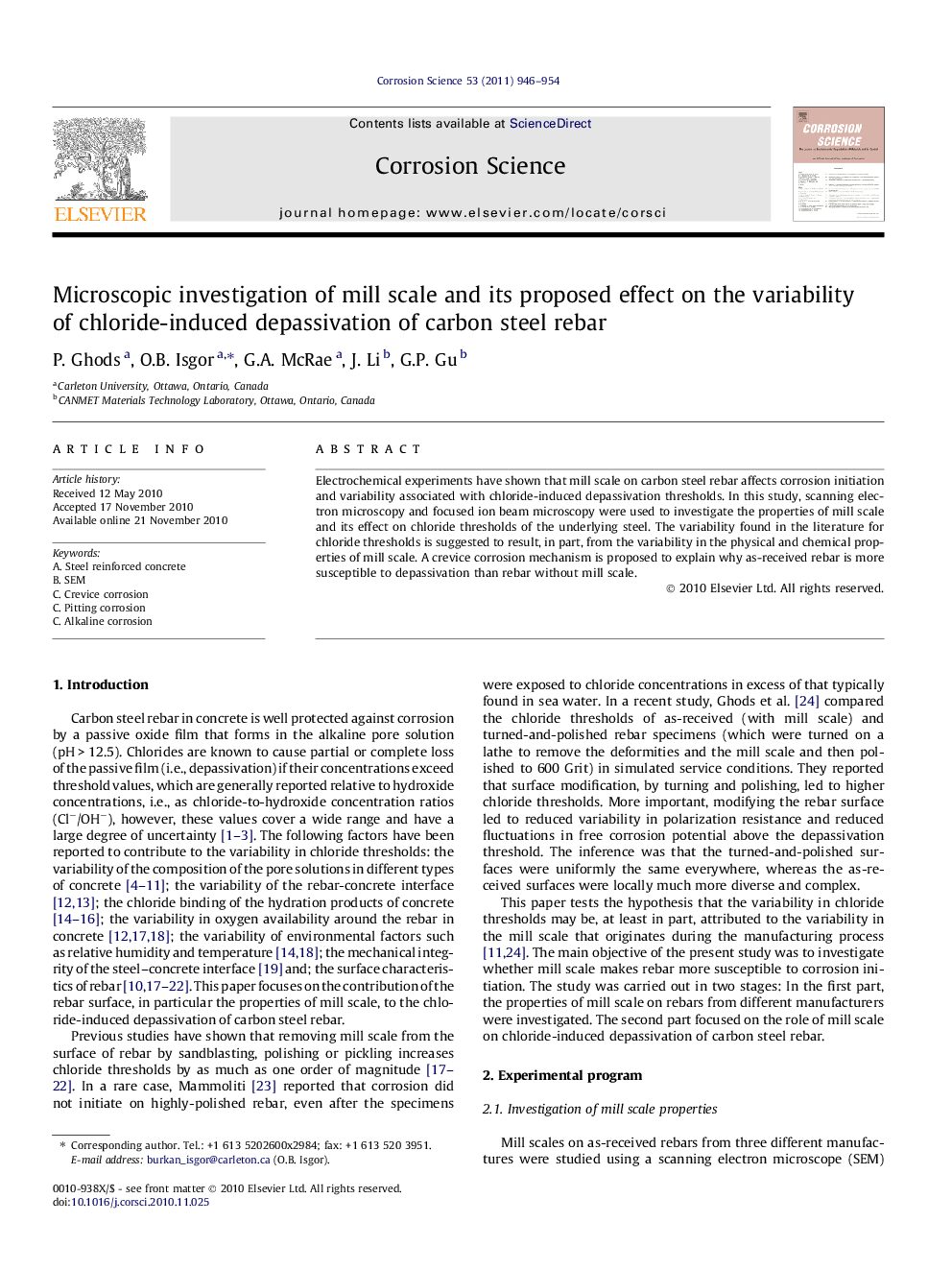| کد مقاله | کد نشریه | سال انتشار | مقاله انگلیسی | نسخه تمام متن |
|---|---|---|---|---|
| 1470677 | 990331 | 2011 | 9 صفحه PDF | دانلود رایگان |

Electrochemical experiments have shown that mill scale on carbon steel rebar affects corrosion initiation and variability associated with chloride-induced depassivation thresholds. In this study, scanning electron microscopy and focused ion beam microscopy were used to investigate the properties of mill scale and its effect on chloride thresholds of the underlying steel. The variability found in the literature for chloride thresholds is suggested to result, in part, from the variability in the physical and chemical properties of mill scale. A crevice corrosion mechanism is proposed to explain why as-received rebar is more susceptible to depassivation than rebar without mill scale.
Research highlights
► Mill scale on carbon steel rebar contains voids, crevices and cracks.
► Crevices between mill scale and steel provide sites for pit initiation.
► As-received rebars have low chloride thresholds due to mill scale crevices.
► Mill scale has large variability in its physical and chemical properties.
► Variability in chloride thresholds may be attributed to the mill scale variability.
Journal: Corrosion Science - Volume 53, Issue 3, March 2011, Pages 946–954